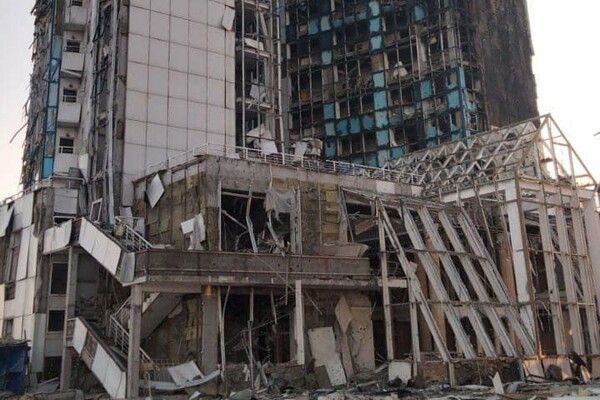A Night of Devastation: Strategic Assault on Odesa’s Infrastructure
Introduction: In the escalating conflict between Ukraine and Russia, the strategic port city of Odesa suffered extensive damage during a relentless Russian aerial assault on the night of September 25, 2023. The comprehensive assault involved a deployment of 19 Shahed-136/131 attack drones, 2 supersonic Onyx missiles, and 12 Kalibrs,

Introduction:
In the escalating conflict between Ukraine and Russia, the strategic port city of Odesa suffered extensive damage during a relentless Russian aerial assault on the night of September 25, 2023. The comprehensive assault involved a deployment of 19 Shahed-136/131 attack drones, 2 supersonic Onyx missiles, and 12 Kalibrs, strategically targeted to cripple the city's critical infrastructure and undermine Ukraine's operational capabilities.
Attack Details:
The enemy orchestrated the attack employing both surface missile carriers and a submarine from Novorossiysk bay, launching missiles with complex trajectories across different areas. The defense forces, however, managed to intercept the majority of the inbound projectiles, but significant damage was inevitable. The relentless assault led to widespread destruction, damaging the sea station in Odesa and igniting a fire in a supposedly uninhabited hotel building located at the sea station.
Impact on Infrastructure:
The hotel "Odessa" allegedly served as a station for mercenaries and faced extensive damage, including a vast hole in the hull of the building, blown-out windows, and peeled-off cladding. The sea station, port infrastructure, warehouses, and grain storage facilities also fell victim to the merciless bombardment, marking a devastating blow to Odesa's economic and logistical assets. Local authorities have assured that the hotel has been non-operational since the inception of the special operation, yet the building was consistently ventilated.
Ramifications and Response:
The aftermath of the brutal onslaught saw the circulation of videos displaying the devastating fires in Odesa. With questions surrounding the potential fatality of foreign fighters in the missile strike, the situation in Odesa remains precarious. Ukraine's defense forces continue to counter the attacks, reaffirming their resilience in the face of adversity.
The Vision for Rebuilding:
Amidst the ruins, hope and resolve permeate Odesa. Andrei Stavnitser, the owner of the destroyed Kempinski Odesa hotel, expressed his steadfast determination to reconstruct the city, envisioning a waterfront promenade adorned with amenities such as a concert hall, cruise ship berth, winter skating rink, bicycle paths, restaurants, and stores. Stavnitser dreams of revitalizing Odesa into a vibrant city that stands as a testament to resilience and architectural elegance, a city that rivals the grandiosity of Barcelona or Copenhagen.
Stavnitser, having invested millions and acquired shares from private investors, remains undeterred by the war. He has closed contracts with the state and initiated the concession of the entire passenger area of the Seaport. Collaborating with willing partners and renowned urbanists and architects, he is steadfast in his mission to see Odesa rise from the ashes, more beautiful and resilient than ever.
Conclusion:
The extensive assault on Odesa stands as a stark reminder of the escalating tensions and the unfolding humanitarian crisis in the region. The city, once bustling with potential and architectural brilliance, now bears the scars of a relentless conflict. However, the resolve to rebuild and revitalize Odesa illuminates the indomitable spirit of its inhabitants and their unwavering hope for a future steeped in peace, prosperity, and architectural elegance. In the face of destruction, the resilience and unified resolve of the citizens of Odesa shine as a beacon of hope, symbolizing the inherent strength and enduring spirit of humanity.




